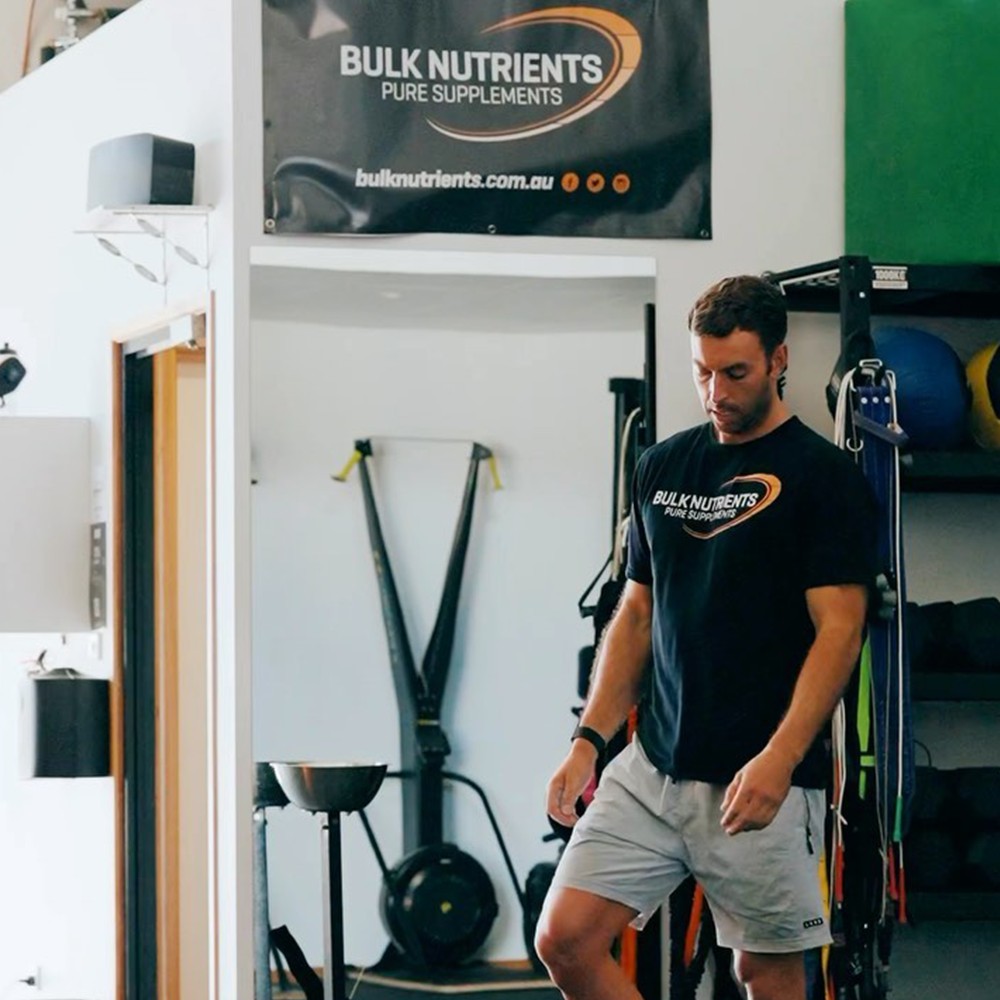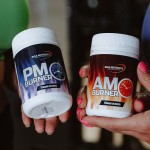How to Be Shredded: 10 Tips for Muscle Building

Ask anyone - most want to get shredded. But doing it properly is what many people don’t understand.
Getting shredded is all about losing a layer of fat which shows up the muscle underneath with greater definition
So to get shredded, I’ll take you through my ten shredding tips of…
- how to set realistic goals
- how to prioritise nutrition
- how to incorporate progressive overload in your resistance training
- how to incorporate cardio
- get enough sleep
- incorporate supplements
- staying consistent
- stay hydrated
- listening to your body
- managing stress.
…and by the end of it, how to be shredded will seem a lot easier. Let’s go!
Tip #1 - Setting realistic goals
Setting realistic goals is critical to your success in shredding. Your goals should be specific, measurable, achievable, relevant, and time-bound (aka, SMART).
For example, instead of setting a goal of "I want to shred heaps," set a goal of "I want to shred 2 kilograms of body fat in the next 6 months."
It’s essential to track your progress towards your goals, so you can adjust your routine if needed and see your progress.
It can help to take a DEXA body scan and understanding your current physique, and then coming back in 4-6 months to track progress.
Tip #2 - Prioritising Nutrition
Nutrition is absolutely critical for building muscle, specifically, protein.
Protein contains amino acids, notably, leucine, which is critical for muscle growth. When we stress our muscles at the gym, they break down and need protein to rebuild and grow stronger.
And these amino acids aren’t found in carbs and fats.
When the rate of our protein consumption outweighs muscle breakdown, that’s when we rebuild and repair muscle. And that’s when we grow.
So that’s why everyone gets excited about protein for muscle growth.

How much protein do you need to get shredded?
According to recent scientific recommendations, the daily protein intake for muscle growth varies based on an individual's body weight and physical activity level.
But because you’re looking to grow muscle mass, it’s recommended we consume ~2.2 grams of protein per kg of weight per day. That’s how much protein is required each day to build muscle.
Creating a diet plan that supports muscle growth
Based on the current evidence, to maximise muscle growth you should consume protein at a target intake of 0.55 grams of protein per kg of weight per meal, spread out over four meals.
This helps you achieve the aforementioned daily intake of 2.2 grams of protein per kg of weight per day. That’s how much protein per day for muscle growth.
And in terms of how many calories you need to eat, eat at 10% over your Total daily energy expenditure.
So if you burn 2000 calories a day, you’ll need to eat 2200 to ensure you can grow muscle, but without gaining too much fat! This is the best way to get shredded.
Tip #3 - Incorporating Progressive Overload
There are three principles of muscle growth (that should be on the walls of every gym!) They are
- Mechanical Tension
- Metabolic Stress
- Muscle Damage
Pertaining to these principles, whilst not mentioned directly, is progressive overload.
Progressive overload is important because it directly drives muscle growth. So what is progressive overload? It's simply increasing the workload for muscles beyond present capacity and this is what generates further muscle growth.
Research shows we can practice progressive overload in the following four ways:
- Increasing the amount of weight we lift
- Increasing the training volume by increasing the number of reps, sets, or exercises performed
- Altering rest periods
- Increasing rep speed during lighter loads
Research also tells us the most popular method is number #1.
And this falls in line with the first principle of muscle growth, mechanical tension; the tension a muscle is under in response to the load being lifted; in other words, lifting heavy induces more mechanical tension.
So, bench pressing 80kg one week? Try 85 the next. And when it feels right, try 90kg.
But make sure you have a spotter to help you when you increase your lifts, safety is critical when we begin lifting heavier weights.
Also, ensure you’ve done 2-3 warm-up sets before lifting any significant amount of weight.

Tip #4 - Incorporating Cardio
To keep any excess fat to a minimum, one of the best shredding tips is to perform cardio.
It also helps to improve cardiovascular health.
There are several types of cardio, such as steady-state cardio, high-intensity interval training, and circuit training. Perform which one you like most and nothing that leads you to be too rundown to perform daily duties or muscle-building work at the gym.
Tip #5 - Getting Enough Sleep
Sleep is crucial to muscle growth and recovery.
When you sleep, your body produces hormones that support muscle growth, such as growth hormone and testosterone.
Aim for at least 7-9 hours of quality sleep each night.
If you have trouble sleeping, try practising good sleep hygiene, such as avoiding screens before bed, creating a relaxing bedtime routine, and reducing caffeine and alcohol intake.

Tip #6 - Incorporating Supplements
Supplements can support your muscle-building efforts, but as we always say here at Bulk Nutrients – they should not be relied on as the sole means of achieving your goals.
We recommend these shredded supplements for muscle growth and getting shredded:
- Protein Powder (whey, casein or plan based depending on your preferences)
- Creatine
- Beta-Alanine
- BCAAs
For detailed scientific information about how these supplements work for muscle growth, take a read of this Bulk Nutrients blog here.
Creatine, Beta Alanine and BCAAs can be taken before training, while we recommend Protein Powder be taken after training.
Just be sure to always read the label before taking your supplements, to ensure you’re putting them to work effectively!

Tip #7 - Staying Consistent
Consistency is key when it comes to building muscle. You need to be consistent with your workout routine, nutrition and sleep habits to see results. Set a routine and stick to it, and make adjustments as needed.
Set your time to train: is it in the morning? After work? Try and keep the same time daily, like brushing your teeth, so you naturally gravitate to the gym and get it done before moving on with your day.
Tip #8 - Staying Hydrated
Hydration is essential for muscle growth and recovery.
Your muscles are made up of about 70% water, and without adequate hydration, your performance in the gym will suffer.
The amount of water a person needs to drink per day when lifting weights varies depending on several factors such as body weight, climate, and overall physical activity levels.
However, a commonly used guideline is to drink at least 2-3 litres of water per day.
It's important to note that drinking water before, during, and after exercise is also crucial for proper hydration. During exercise, aim to drink 500-600 millilitres of water at least 2 hours before starting, and then 200-300 millilitres of water every 10-20 minutes during exercise.
It's also important to keep in mind that thirst may not always be an accurate indicator of hydration levels. So, it's best to drink water regularly throughout the day, even if you're not thirsty. If your urine is a pale yellow colour, this is a sign that you are well hydrated. If it's a darker yellow or amber colour, it's a sign that you need to drink more water!
Tip #9 - Listening to Your Body
Listening to your body is crucial when building muscle.
Overworking your muscles can lead to injury and set back your progress. If you feel pain, discomfort, or exhaustion, it may be a sign that you need to take a break or lift lighter.
Try and take two days off lifting weights every week. And try not to train more than three days in a row if you find yourself feeling really rundown. Here’s an example:
- Monday: Gym
- Tuesday: Gym
- Wednesday: Gym
- Thursday: Off
- Friday: Gym
- Saturday: Gym
- Sunday: Off
As mentioned in Tip #7, try to pick a schedule that works for you and sticking to it til it becomes a habit.

Tip #10 - Managing Stress
Stress can have a significant impact on muscle growth and recovery.
When you’re under stress, your body produces cortisol, a hormone that can interfere with muscle growth and slow down recovery. That's why it's important to manage stress if you want to build muscle and get shredded.
There are several ways to manage stress, including relaxation techniques, mindfulness and exercise
- Relaxation: techniques such as deep breathing, meditation and yoga can help you unwind and reduce stress levels.
- Mindfulness: can help you become more aware of your thoughts and emotions, and give you tools to manage stress in a more effective way. Finally, exercise is an excellent way to reduce stress levels and boost mental health.
Conclusion
So, those are my top ten tips on getting shredding!
To recap: set realistic goals, prioritise nutrition, incorporate progressive overload in resistance training, add in cardio, get enough sleep, take the right supplements, stay consistent, stay hydrated, listen to your body and manage stress.
To recap: set realistic goals, prioritise nutrition, incorporate progressive overload in resistance training, add in cardio, get enough sleep, take the right supplements, stay consistent, stay hydrated, listen to your body and manage stress.
References:
- Bandegan, A., Courtney-Martin, G., Rafii, M., Pencharz, P. and Lemon, P., 2017. Indicator Amino Acid–Derived Estimate of Dietary Protein Requirement for Male Bodybuilders on a Nontraining Day Is Several-Fold Greater than the Current Recommended Dietary Allowance. The Journal of Nutrition, [online] 147(5), pp.850-857. Available at: Indicator Amino Acid–Derived Estimate of Dietary Protein Requirement for Male Bodybuilders on a Nontraining Day Is Several-Fold Greater than the Current Recommended Dietary Allowance.
- Campbell, B., Kreider, R., Ziegenfuss, T., La Bounty, P., Roberts, M., Burke, D., Landis, J., Lopez, H. and Antonio, J., 2007. International Society of Sports Nutrition position stand: protein and exercise. Journal of the International Society of Sports Nutrition, [online] 4(1), p.8. Available at: International Society of Sports Nutrition position stand: protein and exercise. Journal of the International Society of Sports Nutrition.
- Leaf, A., 2020. How Much Protein Do You Need Per Day?. [online] Examine.com. Available at: How Much Protein Do You Need Per Day?.
- Patel, K., 2020. A Second Look At Protein Quantity After Exercise. [online] Examine.com. Available at: A Second Look At Protein Quantity After Exercise.
- Nrv.gov.au. 2020. Protein | Nutrient Reference Values. [online] Available at: Protein | Nutrient Reference Values.
- Thomas, D., Erdman, K. and Burke, L., 2016. Nutrition and Athletic Performance. Medicine & Science in Sports & Exercise, [online] 48(3), pp.543-568. Available at: Nutrition and Athletic Performance. Medicine & Science in Sports & Exercise.
- Mero A. Leucine supplementation and intensive training. Sports Med. 1999 Jun;27(6):347-58. doi: 10.2165/00007256-199927060-00001. PMID: 10418071.
- Tipton KD, Wolfe RR. Exercise, protein metabolism, and muscle growth. Int J Sport Nutr Exerc Metab. 2001 Mar;11(1):109-32. doi: 10.1123/ijsnem.11.1.109. PMID: 11255140.
- Hoffman JR, Falvo MJ. Protein - Which is Best? J Sports Sci Med. 2004 Sep 1;3(3):118-30. PMID: 24482589; PMCID: PMC3905294.
- Carbone JW, Pasiakos SM. Dietary Protein and Muscle Mass: Translating Science to Application and Health Benefit. Nutrients. 2019 May 22;11(5):1136. doi: 10.3390/nu11051136. PMID: 31121843; PMCID: PMC6566799.
- Allerheiligen WB. Speed development and plyometric training. In: Baechle TR, ed. Essentials of Strength Training and Conditioning. Champaign, IL: Human Kinetics; 1994:314-344
- Fleck SJ, Kraemer WJ. Designing Resistance Training Programs. 3rd ed. Champaign, IL: Human Kinetics; 2004
- American College of Sports Medicine Position stand: progression models in resistance training for healthy adults. Med Sci Sports Exerc. 2002;34:364-380
- Goldberg AL, Etlinger JD, Goldspink DF, Jablecki C. Mechanism of work-induced hypertrophy of skeletal muscle. Med Sci Sports. 1975 Fall;7(3):185-98. PMID: 128681.
- Schoenfeld BJ, Grgic J, Ogborn D, Krieger JW. Strength and Hypertrophy Adaptations Between Low- vs. High-Load Resistance Training: A Systematic Review and Meta-analysis. J Strength Cond Res. 2017 Dec;31(12):3508-3523. doi: 10.1519/JSC.0000000000002200. PMID: 28834797.
- Schoenfeld BJ, Grgic J, Van Every DW, Plotkin DL. Loading Recommendations for Muscle Strength, Hypertrophy, and Local Endurance: A Re-Examination of the Repetition Continuum. Sports (Basel). 2021;9(2):32. Published 2021 Feb 22. doi:10.3390/sports9020032
- Chen Y, Cui Y, Chen S, Wu Z. Relationship between sleep and muscle strength among Chinese university students: a cross-sectional study. J Musculoskelet Neuronal Interact. 2017 Dec 1;17(4):327-333. PMID: 29199194; PMCID: PMC5749041.
- Latzka WA, Montain SJ. Water and electrolyte requirements for exercise. Clin Sports Med. 1999 Jul;18(3):513-24. doi: 10.1016/s0278-5919(05)70165-4. PMID: 10410838.
- Katsuhara S, Yokomoto-Umakoshi M, Umakoshi H, Matsuda Y, Iwahashi N, Kaneko H, Ogata M, Fukumoto T, Terada E, Sakamoto R, Ogawa Y. Impact of Cortisol on Reduction in Muscle Strength and Mass: A Mendelian Randomization Study. J Clin Endocrinol Metab. 2022 Mar 24;107(4):e1477-e1487. doi: 10.1210/clinem/dgab862. PMID: 34850018.































